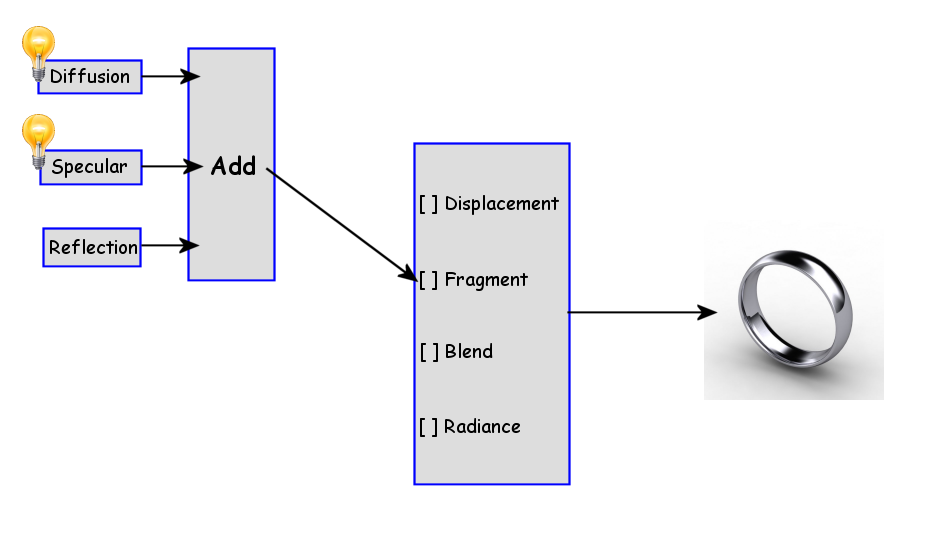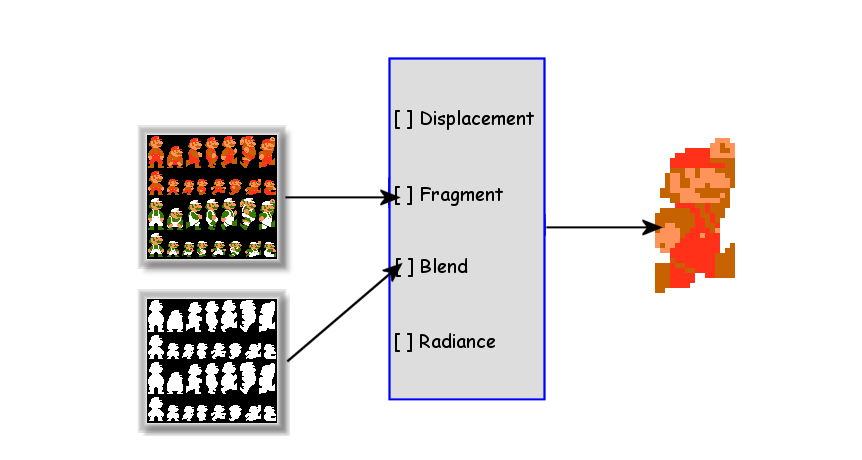In my framework, I implemented materials for being extremely scalable. First of all, I decided to abandon the old format similar to 3D Studio Max or Maxon Cinema 4D and adopt another format more similar to UE4 that is based on Visual Expression Nodes, where one node in this case is called "material component".

A material is composed by different stages: displacement, fragment, blend and radiance. Every stage has parameters and a single component in input, that can be a texture with texture coords, diffusion with lights and normals or the combination of more components with "add" or "multiply" nodes.

If program shaders are supported by the graphics context specialization, the material is translated into a program shader, otherwise it will be rendered as best as possible, with the component types supported by the graphics library.
In the case of Cairo, program shaders are not supported and only texture components are supported. In this case, a single texture component is passed to fragment stage as input, like in the following diagram:

To draw a simple image with Cairo like the background in the example test, a material can be created with just a texture image attached to the fragment stage. If a feature is not available in the context implementation, the rendering won't be produced but no error will be generated. You can try to render a 3D scene with Cairo (and not OpenGL): in this case only 2D shapes will be rendered and not meshes with polygons, complex materials and program shaders, that are not supported. On the contrary, advanced graphics libraries like OpenGL are always able to render scenes with lower features. An OpenGL context should be always able to render a simple 2D scene, like the one showed in the example. In the same way, the GUI can be rendered via software with Cairo libraries or via GPU with OpenGL libraries. However, advanced functionality are not mandatory for the graphics engine to work. In this way, the engine can be scaled from the pac-man clone to the latest 3D games with ray tracing functionality.